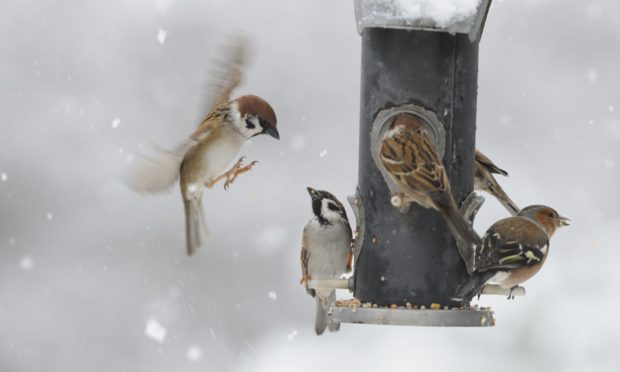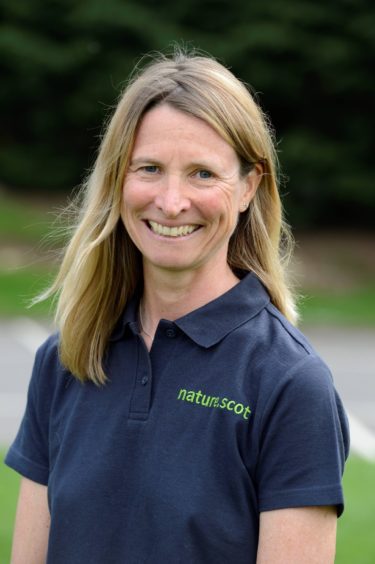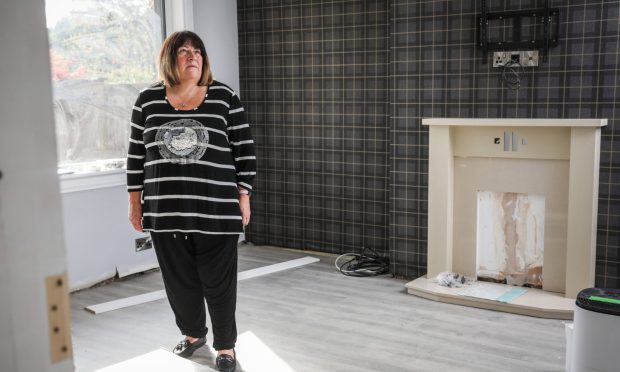NatureScot is Scotland’s nature agency, connecting people and nature in Scotland. It’s no surprise to learn that visits to Scotland’s outdoors increased hugely last year year with many of us enjoying the benefits of nature on our doorstep.
Research by NatureScot into our relationship with the outdoors during the pandemic found 50% of people want to do more to help local wildlife in 2021.
As winter can be a great season to continue these good intentions, the nature agency has launched its winter Make Space for Nature campaign, encouraging people to take part in simple, fun activities to help the planet thrive.
“Nature is at the heart of a green recovery from this crisis, and it’s encouraging to see such an appetite and desire to help nature on our doorstep,” says NatureScot chief executive Francesca Osowska.
“Over this past difficult year, many people found solace in nature during lockdown and beyond – reigniting interests and reminding people of the natural wonders found close to home.
“Many of us reported mental health benefits as a result of spending time in nature, and there are obviously physical health benefits as well,” she continues.
“We are keen to build on this and encourage people to maintain their daily dose of nature in their garden, local greenspace, path or park.
“Our winter campaign aims to help everyone Make Space for Nature in their lives with simple tips and ideas, such as what to feed birds, how to get involved with nature surveys, and what we can all do to help our local wildlife.
“Doing small things really can make a big difference,” she stresses. “Biodiversity and climate change are inextricably linked – in appreciating the natural world, we all have the power to help wildlife, ourselves and help tackle climate change.”
There are so many simple, fun family activities to help the planet thrive, says Francesca.
“Challenge your family to each identify a new species of bird, tree, insect or flower each time you’re out and about and look it up when you get up home if you can’t identify it.
“Try a nature hunt, spot the frost patterns on leaves and spider webs, make snow angels, download plant or bird ID apps or simply notice the seasonal changes – for example, watch ferns unfurling, tadpoles changing, pollinators on flowers, fledglings, or notice which birds are singing.”
Other ideas include wildlife watching: erect bird houses or feeders or recycle your scraps – bruised or overly-soft fruit can be left out for badgers, foxes and birds. Cut fruit in half and leave on grass or spike on a tree branch. If cats or dogs are nearby, avoid grapes/dried fruit as this can cause them harm.
“To attract a range of garden birds, try putting out black sunflower seeds, sunflower hearts, quality peanuts, nyjer seed and/or high-energy seed mixes.
Be a citizen scientist from your garden – get involved in this fun way to help the environment.
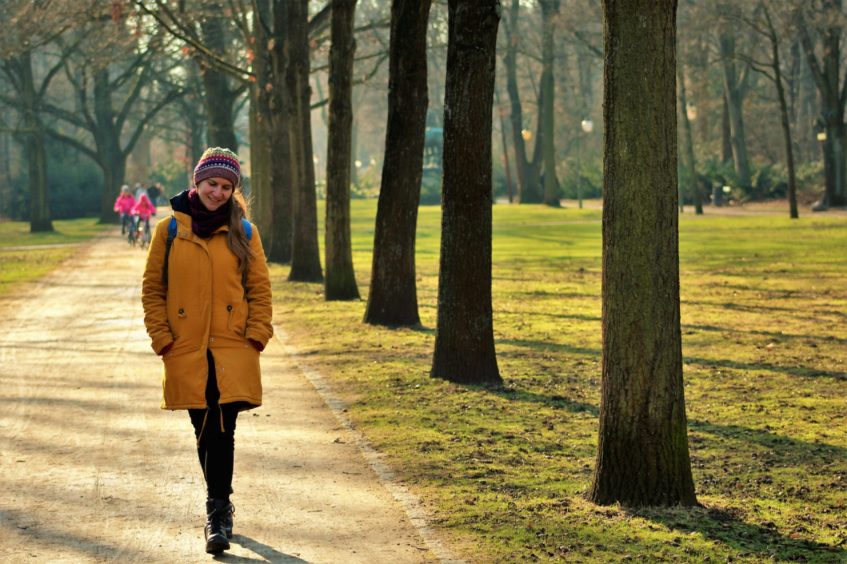
“Submit sightings of birds, frogs, butterflies and much more to organisations like RSPB, Butterfly Conservation, or the Mammal Web.
Pick up and dispose of litter during excursions to the beach, parks, nature reserves and parks.
A perennial favourite: feed the ducks! But avoid bread and instead try sweetcorn, porridge oats, defrosted frozen peas and bird seed.
“Or here’s one that starts with the adults, but provides benefits for the whole family, as you can all enjoy watching the butterflies and other pollinators,” suggests Francesca.
“Mow less – and make a butterfly border. Consider reducing mowing to create an undisturbed wildflower patch, strip or meadow for wildlife.
“Or why not provide a pond – as well as frogs and toads a pond can attract newts, dragonflies, birds and much more. A pond doesn’t have to be a big outlay, even using an old washing up bowl of water or a deep saucer of water on a windowsill can help.”
Encouraging youngsters to play their part is crucial, as Francesca explains: “It’s easy to assume young people are more plugged into their phones than nature, but in our work with Young Scot and with schools on our nature reserves, we’ve found there is an amazing enthusiasm for nature, and a keen desire to protect the environment among Scotland’s young people,” she says.
“This is obviously crucial for their own futures, and the more time they spend in nature, the more they’ll enjoy and appreciate how important it is to all of our and the planet’s well-being.
“Everyone can make a difference with actions, big or small, which help Scotland’s nature – whether that’s by planting bee-friendly flowers in gardens, leaving a patch of grass or garden untended to help pollinators, picking up litter on the beach or park, reporting a wildlife sighting, or volunteering at their local nature reserve.
“We can really help nature, both now and in the future. As well as making space for nature in your home and life, you will also be helping fight climate change, and helping to ensure a healthier and greener Scotland.”
Toby Clark of conservation trust John Muir Trust manages the John Muir Award in Scotland, a national environmental award scheme that encourages people from all backgrounds to enjoy, connect with, and care for wild places – either on their doorstep or further afield.
“Around 20,000 people achieve their John Muir Award across Scotland each year – through establishments such as schools, youth groups, outdoor centres, colleges, family programmes, adult learning and more,” Toby explains.
“Each person who meets the criteria of the John Muir Award needs to Conserve wild places, and annually in Scotland this equates to about 30,000 days-worth of activities that help care for our planet – litter picks, citizen science nature surveys, tree-planting, sowing wildflowers, footpath work, nest boxes etc,” he continues.
“Using National Lottery Heritage Fund figures of volunteer time – all this John Muir Award activity adds up to nearly £1 million in value for nature.
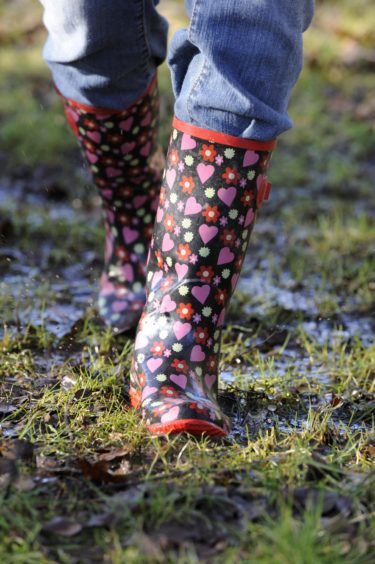
“Our wild places and our wildlife are part of, not apart from, all our lives. They provide us with clean air and water to live, and the natural resources to shelter and feed us.
“They provide jobs and economic security from fishing, to nature tourism. They form the basis of our social history and culture – celebrated in art, music, stories, folklore as well as our languages and place names. They provide places to breathe deeply – either through relaxation and mindfulness, or recreation and excursion. They are places of great beauty and wonder – from watching a butterfly visit an urban window box to a remote mountain top view.
“Wild nature has so much to offer wherever you happen to be.”
Toby believes the best way to look after our wildlife is to keep things simple.
“The more people connect with nature, the more they will be inspired to care for and protect it,” he says.
“We’re all influenced by personal values – the guiding principles that help us make decisions and influence our behaviour. We need more people in Scotland valuing our connection with nature.
“We know that Scotland’s biodiversity – all our living things – is declining at a worrying rate. We also know that our planet’s climate is changing too which can make it even harder for nature to adapt and survive.
“Some species that live in a unique and fragile places like mountains, dunes, bogs and ponds can be more susceptible to change than others. But we can all do our bit to help.
“The good news is that we are already seeing some significant changes.
“The youth voices demonstrated through school climate strikes have awakened many of our politicians and decision-makers to listen more deeply to concerns,” says Toby.
“Our National Health Service are continuing to research, understand and put into practice simple and cost effective ways of including contact with nature with people’s recovery or preventative steps.
“Education Scotland have placed the Learning for Sustainability agenda at the heart of the curriculum with each pupil in Scotland having an entitlement to daily contact with nature.”
For more info and tips visit nature.scot and johnmuirtrust.org
